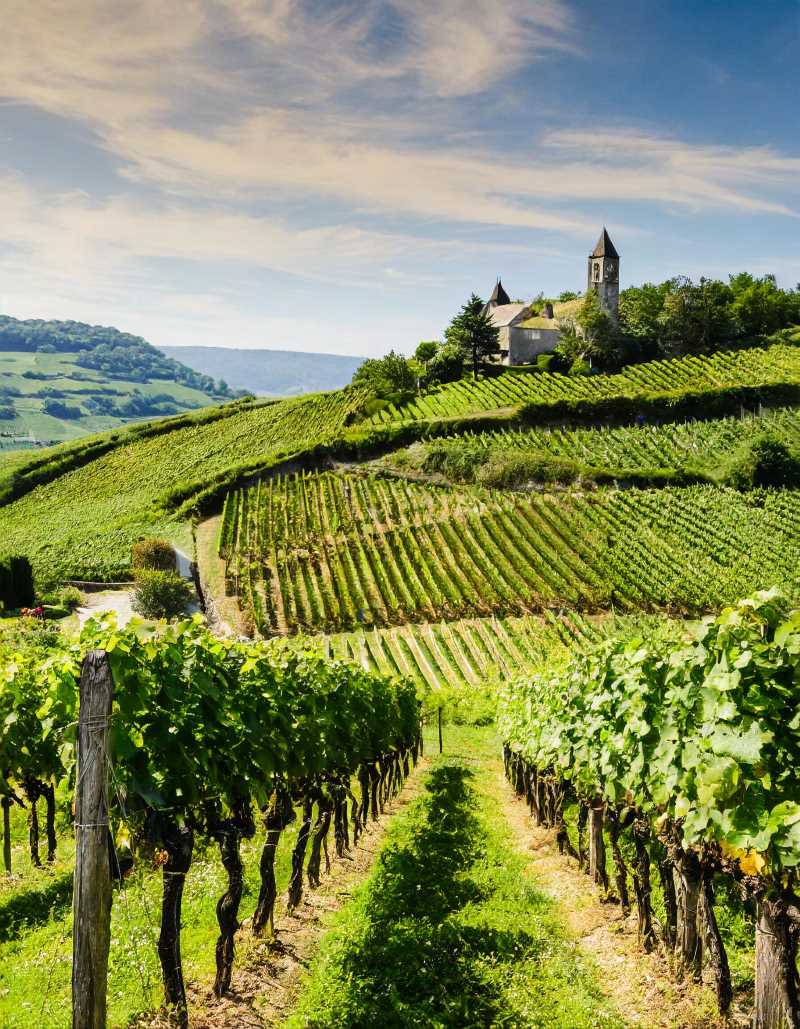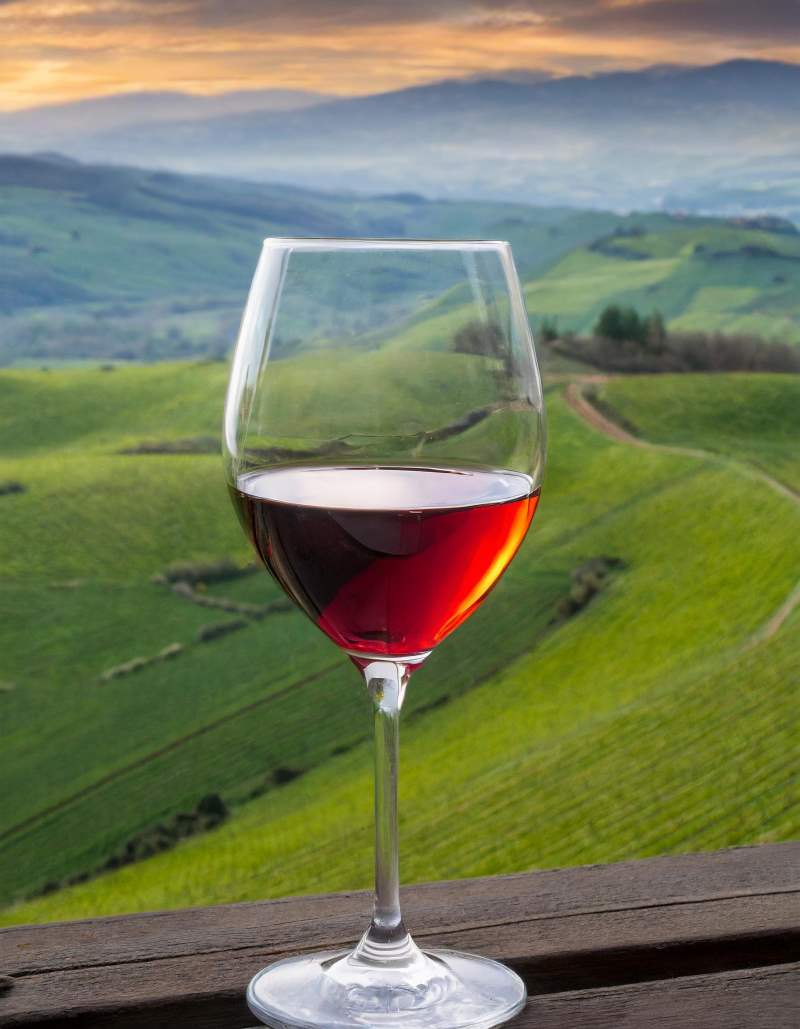How Terroir Shapes Syrah into Shiraz (and Back Again)
Syrah or Shiraz? Same grape, different personalities. French Syrah is elegant and spicy, while Aussie Shiraz is bold and fruity. Both started from 19th century cuttings and thrived in their sunny homes. Today, the line blurs with cooler climates and focus on quality in Oz.

Syrah or Shiraz? The mere mention of the name ignites a playful duel in the world of wine. To the traditionalists of the Rhone Valley, in the heart of France, it's Syrah, a noble grape full of peppery elegance and restrained power. But venture across the globe to Australia's sun-drenched vineyards, and a mischievous glint appears – here, it's all about Shiraz, bold and boisterous, bursting with jammy fruit and a touch of sweetness.
For a while, the French titans pretended not to notice the commotion brewing Down Under. These upstart Aussies, with their “Shiraz,” were crafting wines that defied Syrah's Old World pedigree. Wine lovers, particularly those with a penchant for the flamboyant, were smitten. They reveled in the thick, opulent fruit, the kiss of spice, and a hint of sweetness – a stark contrast to the traditionally peppery or perfumed Syrah produced in France.
This chronicle of two Shirazit (yes, that's the playful term some use for this grape's global duality) isn't just about contrasting styles. It's a captivating story of resilience, adaptation, and ultimately, a delicious case of mistaken identity (or perhaps, a cunning rebranding?).
The truth is, Syrah, the grape itself, seems to thrive on a bit of drama. Planted across the globe, from the sun-drenched slopes of Chile to the historic vineyards of Greece, it reveals two distinct personalities. In warmer climates like Australia, the grape basks in the sunshine, producing wines brimming with bold fruit flavors. Here, Shiraz reigns supreme, a tribute to its remarkable ability to adapt.
But rewind to 1832, and the story takes a fascinating turn. Enter James Busby, a visionary Englishman who brought a treasure trove of European vine cuttings to Australia, forever altering the continent's viticultural landscape. Among the roughly 400 cuttings Busby brought, Syrah turned out to be a champion. This adaptable grape thrived in Australia's hotter and drier climate, laying the foundation for the country's love affair with Shiraz.
Exactly when Syrah morphed into Shiraz in Australia remains a delightful mystery. Some speculated it was a marketing ploy, a way to differentiate the New World style from its Old World counterpart. Others posit a simple case of mispronunciation, a charming quirk that stuck. Whatever the reason, the name Shiraz became synonymous with Australian winemaking, a badge of honor proudly worn by Aussie winemakers.
Today, Syrah and Shiraz co-exist in a delightful partnership. Wine lovers can explore the spectrum – the elegance and restraint of a Northern Rhone Syrah, or the bombastic fruit and spice of a Barossa Valley Shiraz. Each style offers a unique glimpse into the world of this versatile grape, a proof to its ability to thrive and express itself in diverse terroirs.

Down Under and Full of Cheer
It all began with a case of mistaken identity. Back in the 1830s, Shiraz vines, mistakenly believed to hail from the famed Persian city of the same name, found themselves transplanted to the fertile grounds of the Hunter Valley. Little did they know, they were about to embark on a rollicking journey that would redefine Australian wine.
The 1840s saw them sashay further south, landing in the now-legendary Barossa Valley. Here, the party truly got started. By the 1930s, the Barossa was churning out a staggering 75% of Australia's entire wine production, though most were fortified concoctions – think a livelier cousin to sherry – rather than the elegant table wines we know and love today.
Australian table wines, much like a shy teenager at a dance, took a while to find their groove. The exact decade they blossomed into confident, award-winning bottles is a matter of passionate debate amongst wine aficionados. But by the late 1980s, it's safe to say they'd well and truly mastered the art of the grape.
Today, Shiraz reigns supreme as Australia's signature grape, accounting for a cool quarter of all the country's plantings. It's a veritable grape gypsy, at home in pockets across the continent. The warmer climes, like McLaren Vale and the Barossa Valley, bask in the sunshine, producing wines that are full-bodied and bursting with flavor.
Big, bold tannins that sparkle on your tongue, and an intoxicating bouquet of dark chocolate and plump blueberries (McLaren Vale's specialty, courtesy of d'Arenberg, Chapel Hill, and Rosemount). The Barossa, on the other hand, is a Shiraz purist's paradise. Think Peter Lehmann, Penfolds, Yalumba, and countless others crafting wines that are lush, velvety, and utterly captivating – the very essence of Shiraz, some might say.
But don't discount the underdogs. Cooler climates also nurture Shiraz, albeit in a more understated way. Smaller producers, like Tahbilk from Nagambie Lakes, De Bortoli from the Yarra Valley, and Henschke from the Eden Valley, might not have the same brand recognition, but their wines offer a delightful counterpoint. Think more subtle expressions, where the fruit takes center stage and the tannins speak in low voices rather than shout.
Shiraz (and its Alias, Syrah)
Shiraz, or Syrah depending on your geographical persuasion, is a grape with a split personality. Like a mischievous jester in a royal court, it can be both playful and profound. For many, it's the fruit bomb on the supermarket shelf, sporting a cheerful koala or a winking kangaroo on the label. These “value-priced” offerings are the lifeblood of dinner parties and casual Tuesday nights. Sweet, fruity, and undeniably approachable, they usher in new wine drinkers with open arms (and a slightly sticky finish).
But Shiraz/Syrah has a secret side. Beneath the surface of easy drinking lies a potential for greatness, a hidden complexity that emerges with age. This is the Syrah that stirs up the legends of the French Rhône Valley, where the grape reigns supreme. Here, the focus is on structure and nuance, on notes of pepper and leather that move in tandem with the fruit rather than overpower it. These are the bottles meant to be savored, pondered over, and perhaps even cellared for a decade or more.
The irony is, most commercially available Shiraz is designed for immediate consumption. It's a paradox as delightful as a well-timed pun. We buy these wines for their accessibility, yet their true magic lies in waiting. It's like befriending a witty comedian only to discover they're a published philosopher on the weekends.
Here's where things get interesting. While the “bargain Shiraz” revolutionized the wine market, it also blurred the lines between Shiraz and Syrah. Other countries jumped on the bandwagon, adopting the Australian spelling for their own Syrah offerings. This linguistic quirk reflects the global appeal of the grape, but also hints at the subtle differences that emerge depending on where it's grown.
The French, those custodians of tradition, might scoff at the idea of a “well-aged Aussie Shiraz.” They'd argue that Syrah, with its focus on structure, is inherently better suited for long-term cellaring. There's a kernel of truth to that, particularly with high-end bottles from both regions. Both Australian Shiraz and French Syrah can age gracefully for a decade or more, developing layers of flavor that wouldn't be present in their youthful incarnations.

From Fruit Bomb to Finesse
There's a charming awkwardness about a name becoming too successful. Imagine your childhood nickname, once a badge of playful affection, suddenly plastered across billboards, hawking everything from breakfast cereal to lawnmowers. That, in essence, was the plight of Shiraz. The name, synonymous with Australia's bold, brash reds, became a victim of its own exuberance. Consumers, once thrilled by the explosion of fruit, found themselves fatigued by the sheer, unrelenting intensity.
Australia, the undisputed king of Shiraz, started to feel the chill of waning excitement. The solution, they realized with a collective sip, wasn't doubling down on value wines, but in elevating the entire game. Quality, not quantity, became the mantra. This meant a pilgrimage to cooler climates, a meticulous scouting of vineyards for prime real estate, and a newfound appreciation for the diverse terroir that glistened beneath the Australian sun.
The lines between Shiraz and Syrah, once a matter of winemaking philosophy, have become more of a marketing maneuver. Cooler climes tend to favor the more restrained “Syrah” on the label, while warmer regions stick with the familiar “Shiraz.” It's a spectrum, not a hard border, with exceptions zipping in here and there. Yet, a subtle shift has undeniably occurred. The Shiraz of yesteryear, a veritable fruit bomb, has dialed down the intensity a notch. The Syrahs, on the other hand, have gained a richness that eluded them in the past.
Think of it like a character arc in a beloved novel. The brash hero, all swagger and punchlines, discovers the wisdom of nuance. The shy, introspective character, once overshadowed, finds their voice and a touch of boldness. There's a time and place for both, and the beauty lies in the way they fit together.
Australian Shiraz isn't abandoning its roots entirely. The sunshine still plays a vital role, but it's no longer the sole director. Now, the terroir hums its suggestions, the winemaker acts as a discerning conductor, and the grapes themselves become the lead vocalists, delivering a performance with depth, complexity, and a touch of the old, familiar swagger.
Shiraz vs. Syrah on the Palate
To truly understand the difference between a young, fruit-forward Shiraz and a more aged, complex Syrah, a little exploration on the palate is necessary. Here's a breakdown of the two contrasting wines:
- 2023 Barossa Valley Shiraz: This youthful Aussie bursts onto the scene with a vibrant bouquet of ripe plums, blackberry jam, and a hint of peppery spice. The medium-bodied palate is juicy and plush, awash with flavors of dark fruit, milk chocolate, and a touch of vanilla from oak aging. The tannins are soft and approachable, making it a perfect choice for a casual weeknight dinner.
- 2017 Northern Rhône Syrah: This French Syrah, with a few years under its belt, presents a more nuanced aroma. Earthy notes like leather and black olive mingle with hints of black fruit and smoked meat. On the palate, the wine is medium-bodied but structured, with flavors of black cherry, licorice, and cracked pepper. The tannins are grippier, hinting at its aging potential. This Syrah would pair beautifully with grilled lamb or roasted vegetables.
These are just examples, and the specific tasting profile will vary depending on the producer, region, and vintage. However, this comparison should give you a general idea of the contrasting styles between a young Shiraz and a more aged Syrah.
That said, the next time you reach for a bottle of Australian Shiraz or Syrah, remember the curious case of this iconic grape. It's a story of evolution, of a name finding its new voice, and of a country rediscovering the treasures hidden within its own land. Raise a glass, then, to the future of Australian wine – a future where both the fruit bomb and the nuanced blend find their rightful place on the table.
In-text Citation: (Firth, 2012, pp. 34-35)




